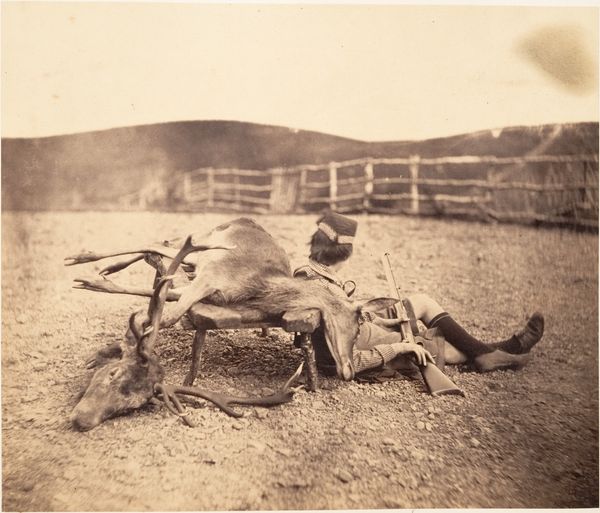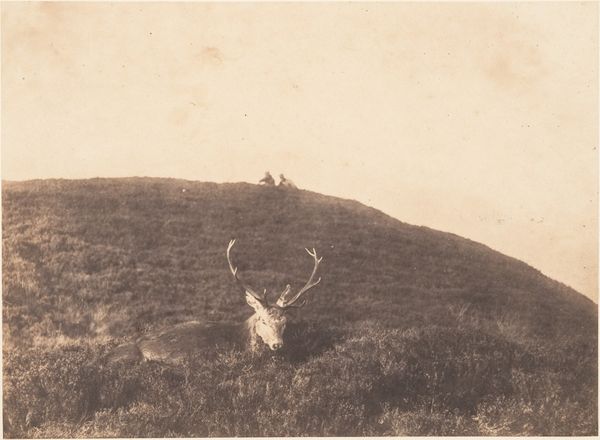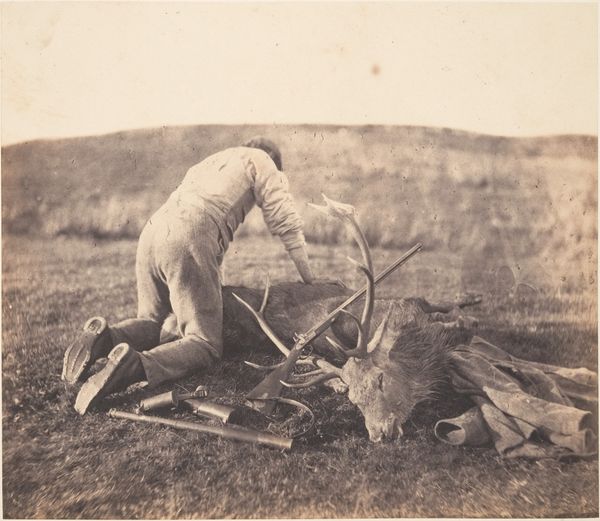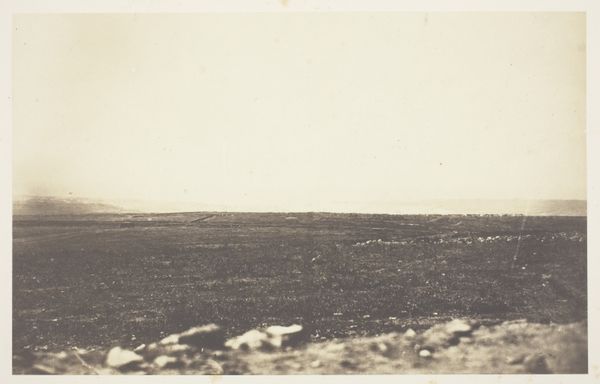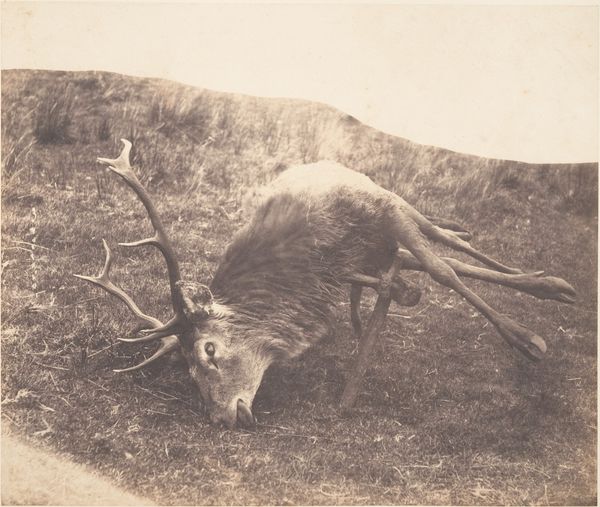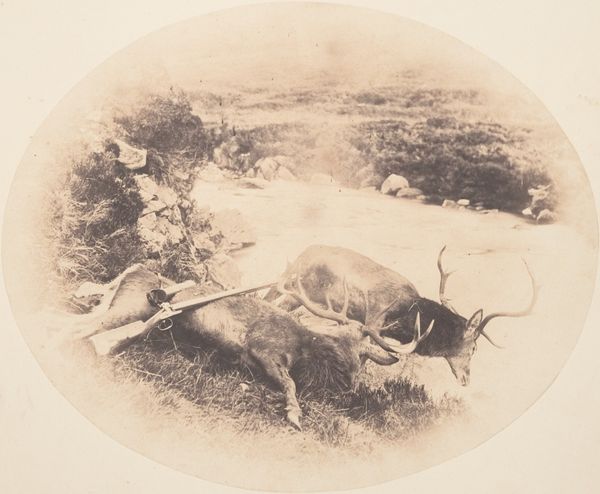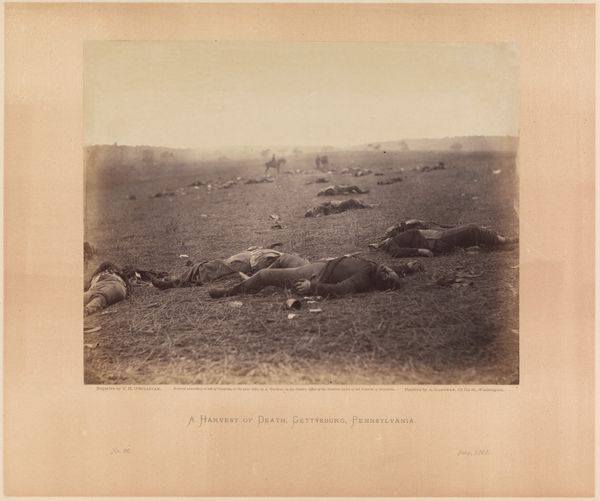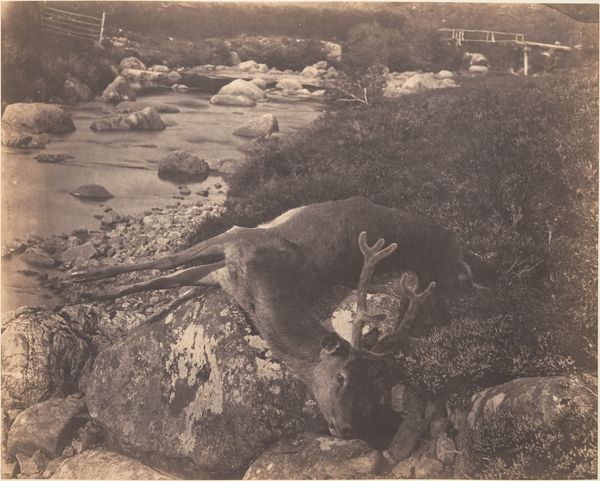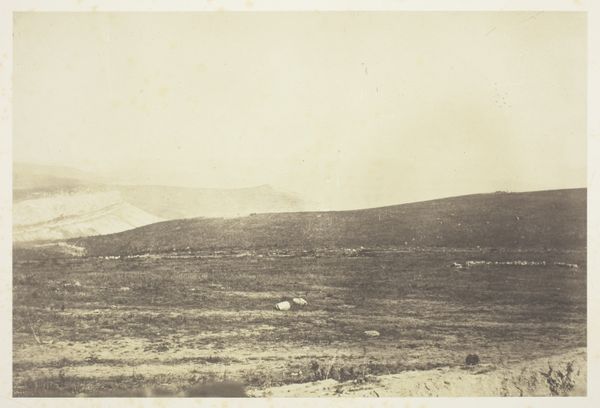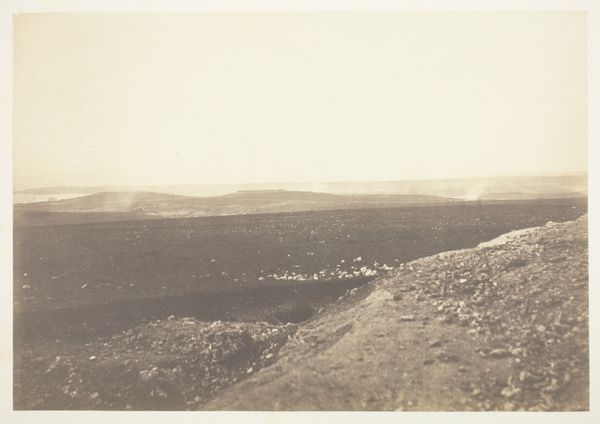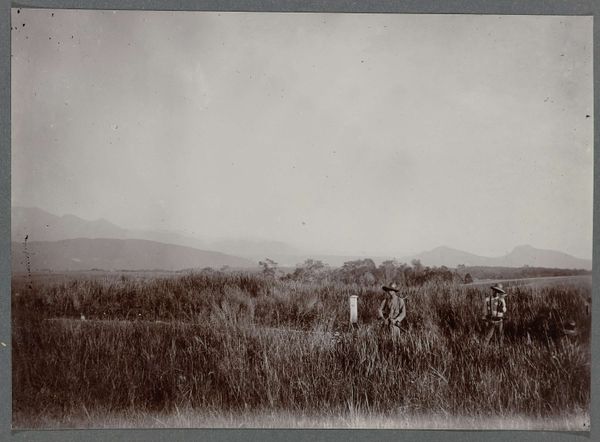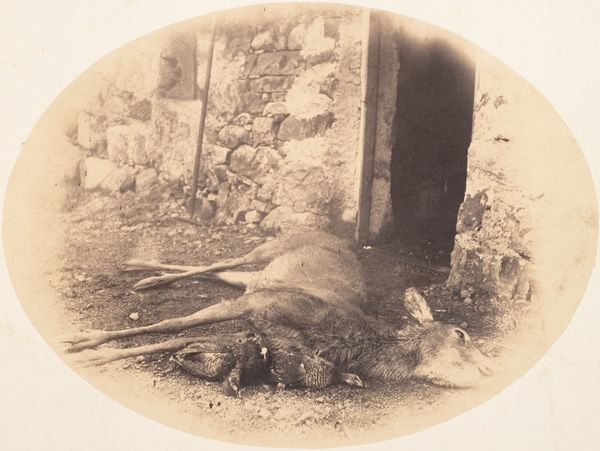![[Two Stags and Roe Buck] by Horatio Ross](/_next/image?url=https%3A%2F%2Fd2w8kbdekdi1gv.cloudfront.net%2FeyJidWNrZXQiOiAiYXJ0ZXJhLWltYWdlcy1idWNrZXQiLCAia2V5IjogImFydHdvcmtzLzVjNWFmYWU5LTE3NTAtNGZmYi05MzRmLTczMjQxYzNiNWViNi81YzVhZmFlOS0xNzUwLTRmZmItOTM0Zi03MzI0MWMzYjVlYjZfZnVsbC5qcGciLCAiZWRpdHMiOiB7InJlc2l6ZSI6IHsid2lkdGgiOiAxOTIwLCAiaGVpZ2h0IjogMTkyMCwgImZpdCI6ICJpbnNpZGUifX19&w=3840&q=75)
photography, gelatin-silver-print
#
still-life-photography
#
landscape
#
photography
#
gelatin-silver-print
#
realism
Dimensions: 15.9 x 20.6 cm (6 1/4 x 8 1/8 in.)
Copyright: Public Domain
Editor: This is Horatio Ross's 1858 photograph, "[Two Stags and Roe Buck]," currently housed at the Metropolitan Museum of Art. It's a gelatin silver print, and I find the stillness within this landscape unsettling, as the placement of the subjects disrupts the natural flow. What do you see in this piece, examined through a Formalist lens? Curator: The organization of this photograph is deeply compelling. Note the careful arrangement of the deer. They are positioned not randomly, but in a triangular composition, a form often associated with stability and order in classical painting. However, the very subject disrupts this sense of stability; these are deceased animals. What visual tensions do you observe resulting from this contrast? Editor: I notice how the texture of the landscape, with the slight incline of the hill and varied grasses, opposes the flatness of the animals and grounds the entire composition. It almost separates the natural and the unnatural, like life and death coexisting in the frame. How might the limited tonal range contribute to our understanding? Curator: Indeed, the monochromatic palette simplifies the visual field, drawing our focus to the contours and forms themselves. Notice how the antlers create lines that both intersect with and extend beyond the central triangular structure. They function as graphic elements that disrupt an otherwise straightforward visual representation. Would you say this adds or detracts from its formal strength? Editor: I believe that tension elevates the photo from merely documenting a hunting scene into an artful exploration of nature’s form and life's fragility. This analysis really enhanced my perception of this unsettling photograph! Curator: Precisely. It is through such focused observations on the interplay of line, form, and tonality that we uncover meaning residing intrinsically within the work.
Comments
No comments
Be the first to comment and join the conversation on the ultimate creative platform.
